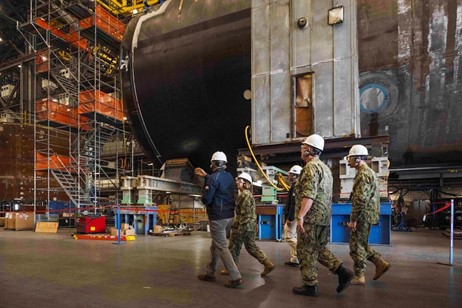The heroic accomplishments of America’s soldiers, sailors, airmen and marines would not have been possible without the tools they need. Those weapons come from the nation’s defense industrial base, the “arsenal of democracy.”
Imagine the aftermath in World War II if the U.S. was unable to rebuild its Pacific fleet after the devastation of the Pearl Harbor attack, or the tanks, planes and artillery required to repulse the armies of Nazi Germany and Japan.
Events over the last few years have revealed that asset to be inadequate to the needs of both the U.S. and its allies.
The Department of Defense is clearly worried. Recently, it published what can best be described as an anguished warning.
“The defense industrial base is facing serious challenges, and now is the time to help those businesses before it is too late,” noted David Norquist, president and chief executive officer of the National Defense Industrial Association and the deputy secretary of defense from 2019 to 2021, He explained that “The United States is seeing the return of great power competition and can no longer outpower its adversaries on size alone as it once did…The United States was simply bigger than Nazi Germany, Imperial Japan and the Soviet Union. We had a larger economy, and we could show up late to the fight, producing volume and eventually getting around to victory; it would just take us a little while…China now has an economy similar to the U.S. and a larger population.”
From 2016 to 2022, the Defense Logistic Agency lost about 22%, or 3,000 vendors. Small businesses accounted for 2,300 of those losses. Overall, the Department of Defense lost 43.1% of its small businesses in the same timeframe.
A Heritage study outlines a key challenge: “Not only have manufacturing and key industrial processes moved overseas, but—even worse—they have moved to China, America’s chief rival. The U.S. is in a ‘new Cold War’ with China even as the two countries’ economies are deeply intertwined.”
The Congressional Research Service (CRS) has weighed in on the looming crisis.
“…an appropriately-sized industrial base is essential to the United States’ ability to supply and equip its military forces. In addition to supporting current military needs, the resources available must be able to accommodate future demand. This latter requirement makes surge capacity—the ability to quickly expand output in response to sudden upticks in demand—an important dimension of broader industrial capacity. If the Defense Industrial base too small, it will be unable to supply all of the materials, products, and services necessary to accomplish U.S. strategic objectives, and the military may lack the ability to execute its assigned missions…an appropriately-sized industrial base is essential to the United States’ ability to supply and equip its military forces. In addition to supporting current military needs, the resources available must be able to accommodate future demand. This latter requirement makes surge capacity—the ability to quickly expand output in response to sudden upticks in demand—an important dimension of broader industrial capacity. If the Defense Industrial base too small, it will be unable to supply all of the materials, products, and services necessary to accomplish U.S. strategic objectives, and the military may lack the ability to execute its assigned missions,”
CRS found that “Some analysts and policymakers have argued that the current capacity of the industrial base is insufficient for the demands of great power competition. As Seth Jones of the Center for Strategic and International Studies (CSIS) framed the problem in a 2023 study: The U.S. defense industrial base is not adequately prepared for the competitive security environment that now exists. It is currently operating at a tempo better suited to a peacetime environment. In a major regional conflict—such as a war with China in the Taiwan Strait— the U.S. use of munitions would likely exceed the current stockpiles of the U.S. Department of Defense, leading to a problem of ‘empty bins.’”
Reversing the downturn in capacity would require reversing tax and regulatory policies that have chased American manufacturing offshore. Reducing the difficulty of working with federal agencies would go a long way in encouraging smaller firms to build capacity to fulfill defense contracts would also be a major step forward.
Photo: DoD
